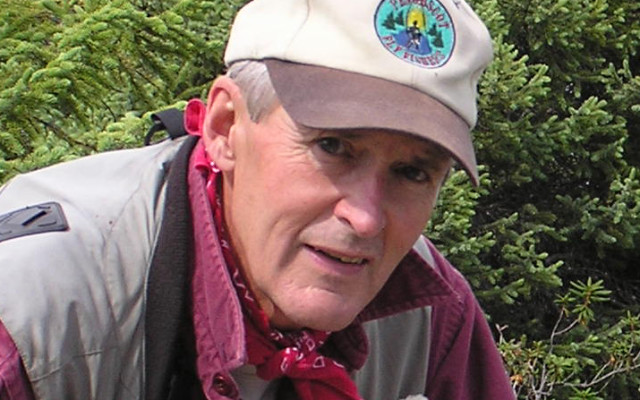
Arctic charr stir debate over stocking fish in Green Lake
By V. Paul Reynolds
Among those Maine anglers who talk and ponder such things, the Arctic charr is getting a fair amount of attention these days. This cold-water native Maine fish has a Laurentian lineage, which means that its ancestors date back to the Ice Age. In the U.S, there are just 12 waters that hold the Arctic charr. All are in Maine.
One of these 12 waters is Green Lake in Hancock County. According to Bob Mallard, spokesman for the Native Fish Coalition, Green Lake is the only water in the country where Arctic charr and landlocked salmon “occurred naturally.” The term for this is “coevolved.” The lake is also a native habitat for rainbow smelt as well. Mallard says that this triple species mix of native fish make Green Lake a “natural resource of national significance.”
Although it was once thought that the Green Lake charr were not native, that they were progeny from a stocking in Green Lake of charr from Floods Pond in the late 1800s, there is now a growing consensus, backed by scientific data, that seems to point to the charr as being a native fish in Green Lake. IF&W’s fisheries chief, Francis Brautigam, says that the Department acknowledges that the Green Lake charr “are likely endemic.”
Since 1961, IF&W has been regularly stocking both salmon and lake trout in Green Lake. Because lake trout are deep bottom dwellers like charr, Mallard and the NFC contend that this stocking is misguided, that the lake trout in particular will forage on the charr and hybridize with them, and thus represent a direct threat to the native charr’s survival. NFC believes, for these reasons, that the stocking of lake trout in Green Lake should be halted.
Where do we go from here? Clearly there is a niche in fisheries politics and advocacy for native fish evangelists like Mallard and his growing organization, which has fought hard for wild native fish protection. But the larger question becomes: “How far do we go and how big a sacrifice and how much energy and public money are we willing to expend to protect a native fish in a specific body of water? Contrary to Mallard’s criticism of IF&W’s charr protection protocols, IF&W has gone to the wall to save other charr waters in Maine. Big Reed Pond and Wadleigh Pond are cases in point.
IF&W’s long-range fisheries management plan calls for the Arctic charr to be “sustained as a species.” That is being done, regardless of what happens at Green Lake.
NFC’s mission is unequivocal. It wants “no fish ever stocked over wild native fish, period!” In my view, this is a significant departure from conventional fisheries management philosophy. Who knows, NFC may be riding a new wave, an emerging neo-ethic in modern fisheries stewardship. But applied broadly, it cuts to the quick of Maine’s existing recreational angling culture, outdoor economy (guides, sporting camps, outfitters, etc) and biology.
The question of stocking lake trout in Green Lake is certainly worthy of debate and sober deliberation. And NFC has a role in bringing these native fish issues to the fore. Of note, however, is the fact that the Green Lake charr are still there despite 60 years of lake trout and salmon stocking. According to IF&W, there is no evidence that the charr numbers have appreciably changed in 60 years! If Green Lake was the only charr water in Maine, the choices might be more clear cut. But that is not the case.
Everything, even fisheries management, is a trade off. If, as Mallard contends, it is irresponsible to stock hatchery fish over wild native fish, then what about the stocking of hatchery salmon over native salmon at Green Lake. Will that be challenged next? And what about Moosehead Lake and dozens of other Maine salmon waters?
So, boiled down, the decision hinges on whether pedal-to-the-metal charr protection in Green Lake justifies the closing down of lake trout stocking there, or even salmon stocking, and in turn compromising a historically robust and diverse recreational fishery.
_______________
The author is editor of the Northwoods Sporting Journal. He is also a Maine Guide and host of a weekly radio program “Maine Outdoors” heard Sundays at 7 p.m. on The Voice of Maine News-Talk Network. He has authored three books.Online purchase information is available at www.maineoutdoorpublications.com.